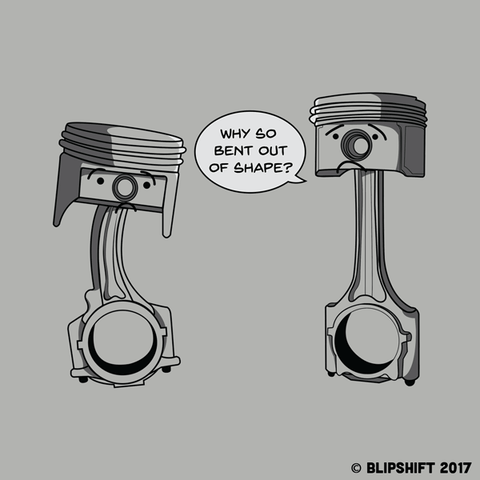What are the reasons for bending / bulking of connecting rods?
The connecting rod connects the pistons to the crankshaft. It converts the linear motion of the pistons to the rotary motion of the crankshaft. On every stroke, the connecting rod is stretched and compressed. This pressure, plus other factors, can cause the connecting rod to bend.
Some of the reasons for bending or bulking of connecting rod
Hydrolock
Hydrolock is a deformation of the connecting rod caused when water gets into the piston chamber. This usually happens after the car has been driven through deep water such as a flooded street. Liquid will not compress like a fuel and air mixture so the only thing that can happen is the rod will bend as the piston is stopped prematurely at the top of the stroke. If only a little water gets into the cylinder the car makes a knocking or tapping sound and it can be repaired (have the water taken out and the gaskets replaced), but if enough water gets in the cylinder that it takes up all the space available at spark time, the connecting rod will bend or snap. Hydrolock is much more common in boats than in cars because boats are always operated around water.

Fatigue
Fatigue is the main cause of broken connecting rods--especially in older engines. The constant compression during the power stroke and stretching during the exhaust stroke, over thousands of times a minute, eventually wears the metal out and it becomes brittle and finally breaks. If the oil is low or dirty it can speed up this process. Running the engine hot can also speed up the process. Sometimes a fairly new engine can have fatigued connecting rods if it is a rebuilt engine and the mechanic used cheap parts or the wrong parts for the engine.
also:
1. Inadequate strength of connecting rod.
2. improper valve clearance.
3.types of fuel being used (every fuel has different compression ratio) .
4. Wrong installation of piston & connecting rod in cylinder.
5. Also may be thermal expansion.
6. Wrong timing during firing, caution!firing order and valve clearance settings







Comments
Post a Comment